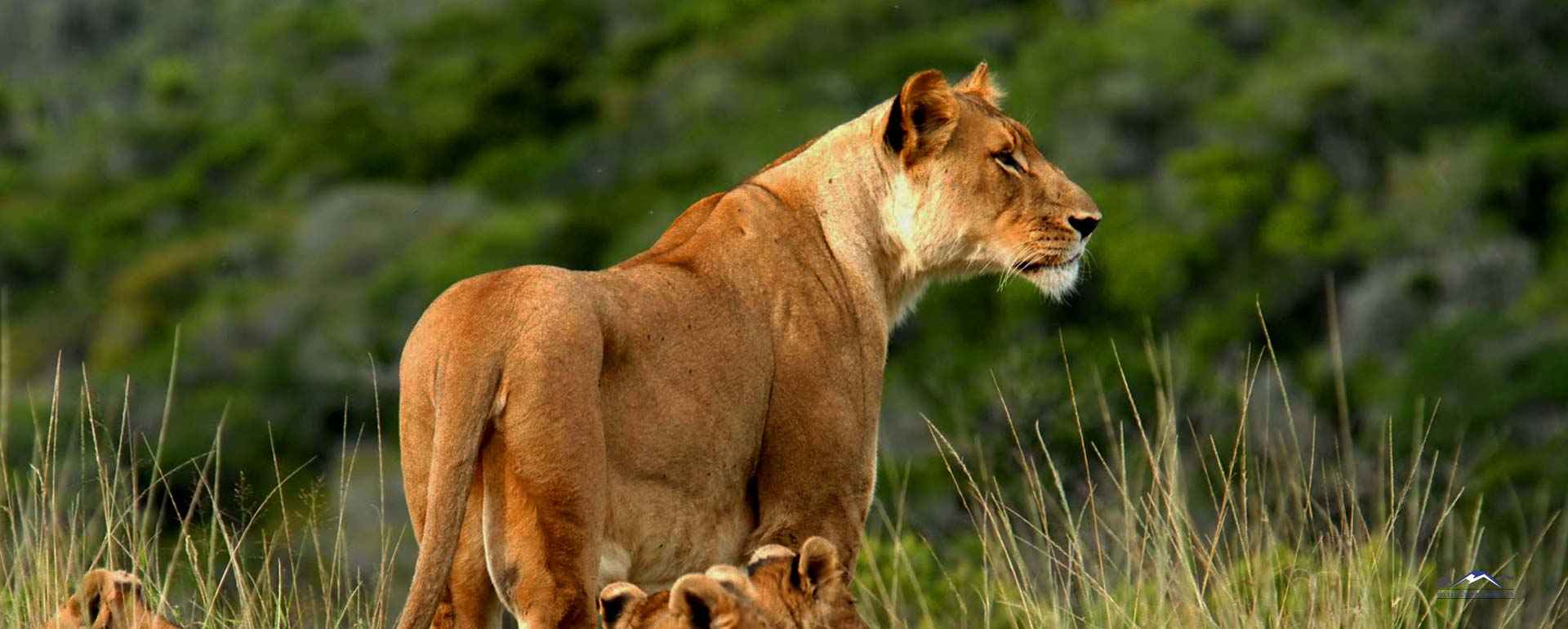TSAVO: East meets West

Tsavo National Park, one of Kenya's largest and most diverse wilderness areas, is divided into two distinct regions: Tsavo East and Tsavo West. Together, they span over 22,000 square kilometers, offering a rich tapestry of landscapes and wildlife.
Tsavo East National Park
Tsavo East, covering approximately 13,700 km², is characterized by vast savannahs and grasslands. It is home to large herds of elephants, often coated in red dust, and a variety of wildlife, including lions, leopards, and the rare gerenuk antelope. The park's geological features include the Yatta Plateau, the world's longest lava flow, and Mudanda Rock, a popular viewpoint for observing wildlife at waterholes. Birdwatchers will delight in over 500 species, including the Somali ostrich and golden-breasted starling.
Tsavo West National Park
In contrast, Tsavo West is more mountainous and lush, featuring diverse habitats like acacia woodlands and riverine forests. Key attractions include Mzima Springs, which provides a vital water source for wildlife and is famous for its underwater hippo viewing. The park is also home to the Ngulia Rhino Sanctuary, dedicated to conserving the endangered black rhino. Tsavo West boasts over 600 bird species, making it a birdwatcher's paradise.
Historical Significance
Both parks are steeped in history, notably the infamous "Man-Eaters of Tsavo," a pair of lions that terrorized railway workers in the late 19th century. This legend has contributed to the parks' allure, drawing visitors eager to learn about this fascinating tale while exploring the wild landscapes.
Tsavo Park Entry Fees
Category Citizen (KSH) Resident Non- Resident (USD)
Adult 515 1030 52
Child 215 515 35
Wildlife and Conservation
Tsavo is renowned for its diverse wildlife, including the "maneless lions" unique to the region, large elephant herds, and various antelope species. Conservation efforts are crucial here, as poaching and habitat loss threaten many species. Visitors can engage in guided tours that emphasize the importance of wildlife preservation and the challenges faced by these ecosystems. Tsavo East and West National Parks offer unique wildlife experiences that showcase Kenya's rich biodiversity and stunning landscapes. Here are some of the highlights:
Tsavo East National Park
Red Dust Elephants
Tsavo East is famous for its large herds of elephants, often referred to as "red elephants" due to their dust-covered appearance. Visitors can witness these magnificent creatures roaming the savannahs and enjoying dust baths, providing a spectacular sight against the backdrop of the park's vast plains.
Unique Lion Population
The park is home to the iconic maneless lions, which lack the traditional mane, giving them a distinctive look. These lions are a significant draw for wildlife enthusiasts and photographers alike.
Diverse Wildlife
In addition to elephants and lions, Tsavo East hosts a variety of wildlife, including leopards, buffalo, hippos, and numerous antelope species. The park's watering holes attract a multitude of animals, making it an excellent location for game viewing.
Birdwatching
With over 500 bird species recorded, Tsavo East is a birdwatcher's paradise. The best time for birdwatching is from October to January when migratory species are present.
Tsavo West National Park
Mzima Springs
One of Tsavo West's main attractions is Mzima Springs, where crystal-clear water flows from the lava rock, creating a lush oasis. This area is home to hippos, crocodiles, and a variety of bird species, offering unique opportunities for wildlife viewing, including underwater hippo observations.
Black Rhino Sanctuary
Tsavo West is home to the Ngulia Rhino Sanctuary, dedicated to the conservation of the endangered black rhino. Visitors have the chance to see these rare animals in their natural habitat, contributing to the park's appeal for conservation-minded travelers.
Scenic Landscapes
The park's diverse topography includes volcanic formations, rocky ridges, and acacia woodlands. Notable viewpoints like Poacher's Lookout provide breathtaking panoramas of the wildlife-rich plains below.
Rich Birdlife
Tsavo West boasts over 600 bird species, making it a prime destination for birdwatching. Unique species such as the threatened corncrake can be found here, adding to the park's allure for avian enthusiasts.
Cultural Encounters
Both parks offer opportunities for cultural interactions with local communities, allowing visitors to learn about the traditions and lifestyles of the indigenous people who coexist with this rich wildlife heritage.
Activities and Attractions in Tsavo National Park
Visitors to Tsavo can enjoy a range of activities, from game drives to guided walking safaris. The parks offer stunning landscapes for photography, opportunities for cultural encounters with local communities, and the chance to witness the dramatic sunsets that paint the African sky. Popular spots include the Yatta Plateau, Lugard Falls, and the scenic Poacher's Lookout, which provides panoramic views of the wildlife below.
Accessibility and Accommodation
Tsavo National Park is easily accessible from major cities like Nairobi and Mombasa, making it a convenient destination for tourists. Accommodation options range from luxury lodges to budget campsites, catering to various preferences. Visitors are encouraged to plan their trips during the dry seasons for optimal wildlife viewing, although the lush landscapes of the rainy season also offer unique experiences.
In summary, Tsavo National Park, with its rich biodiversity, historical significance, and stunning landscapes, offers an unforgettable safari experience. Whether exploring the arid plains of Tsavo East or the lush oases of Tsavo West, visitors are sure to encounter the raw beauty and wild spirit of Africa. Whether you seek adventure, photography, or conservation, these parks are a must-visit for any wildlife enthusiast.
